Indulge in the traditional Okinawan deep-fried sweet treat, Sata Andagi, which offers a delicate sweetness with a crispy outside and a fluffy inside. You will be captivated by its flavor and texture.

Jump to:
What is Sata Andagi?
Sata Andagi is a round sweet made by mixing wheat flour with sugar, eggs, and baking powder, and then deep-frying the mixture. It is one of the most popular desserts in Okinawa, located at the southwestern tip of Japan, and is enjoyed as an everyday snack.
In the Okinawan dialect, "Sata" means sugar, "Anda" stands for oil, and "agi" refers to deep-frying. When deep-fried, its shape resembles a smiling face or blooming flowers, making it a symbol of good luck. Therefore, in Okinawa, it is also often served at celebratory occasions like weddings.
Since it is deep-fried with very little moisture apart from eggs, it boasts a satisfying texture and a good shelf life. Its deliciousness and ease of consumption may lead you to eat it quickly without even realizing it.
What is the difference from donuts?
Sata andagi is sometimes referred to as 'Okinawan doughnuts' because its ingredients and preparation are similar to those of doughnuts.
The main difference between the two is that sata andagi, unlike doughnuts, doesn't include liquids such as water or milk in the recipe; instead, it incorporates eggs. As a result, this sweet treat has a denser texture and unique flavor, making it particularly satisfying.
Various flavors
Here, I'm sharing a common type of sata andagi recipe using white sugar. However, you can create various flavors by adding the following ingredients:
- Brown sugar (instead of white sugar)
- Matcha powder
- Beni-imo (Okinawan purple sweet potatoes)
- Kabocha squash
- Carrots
When adding the vegetables, mash one of them in the same amount as the flour until it becomes smooth using a spatula, sieve, or blender before incorporating it. Adding these vegetables essentially won't alter the other ingredients in the recipe. After enjoying the basic sata andagi, feel free to experiment with these additions.
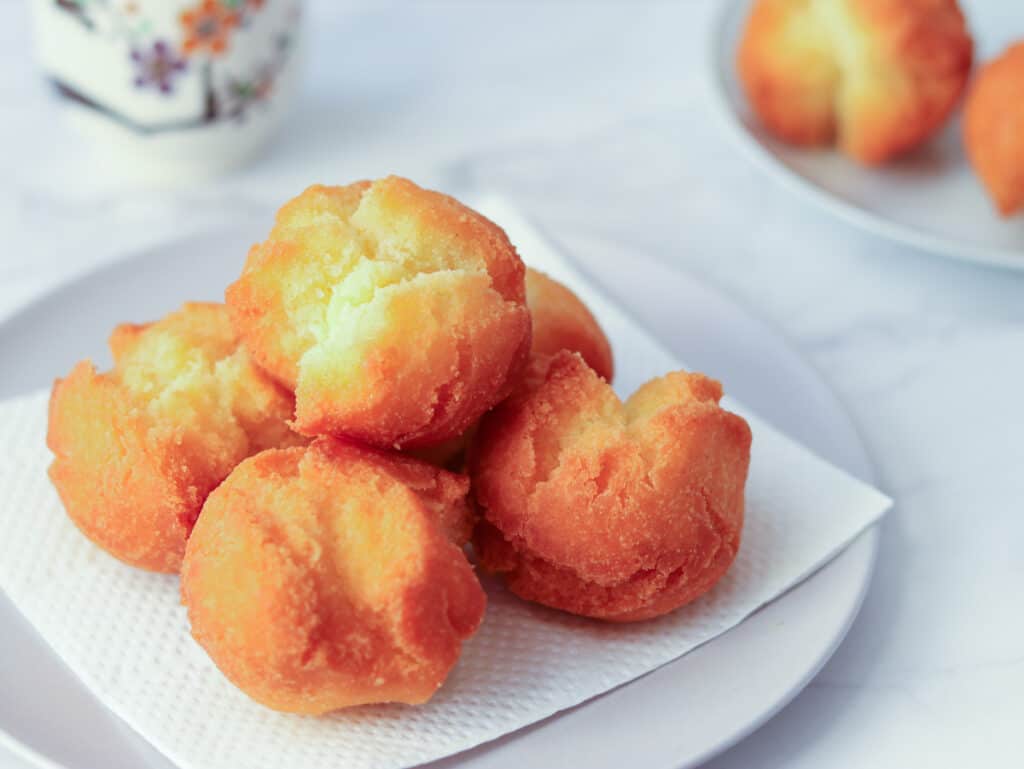
📋Step-by-step recipe
Ingredients
- 1 large egg (about 2.1 oz/60 g, including shell)
- ⅓ cup white sugar
- 1 tsp neutral oil
- 1 ¼ cup cake flour
- 1 tsp baking powder
- 1.2 inches (3cm) of neutral oil in the pan (for deep-frying)
Instructions
🕒 Total: 25 mins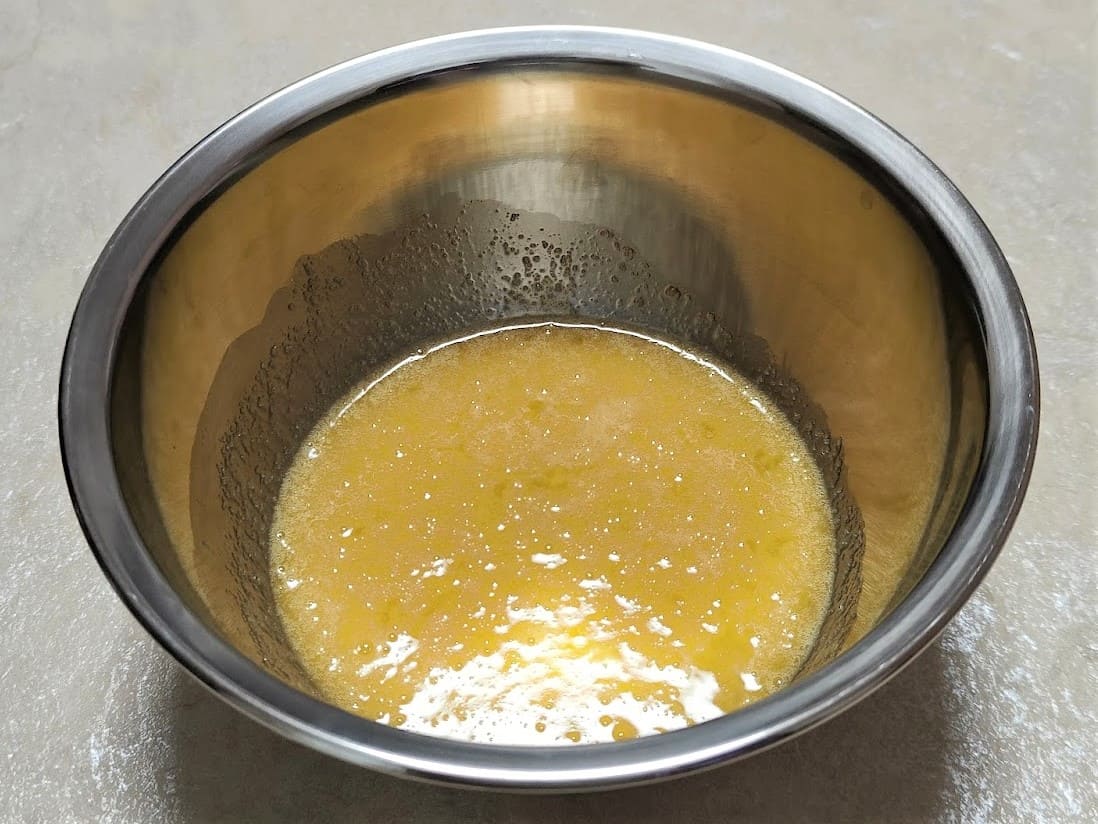
Step 1
Crack egg into a bowl and beat it with sugar and oil.

Step 2
Sift flour and baking powder into the bowl, and mix everything together with a spatula until no powder is visible.
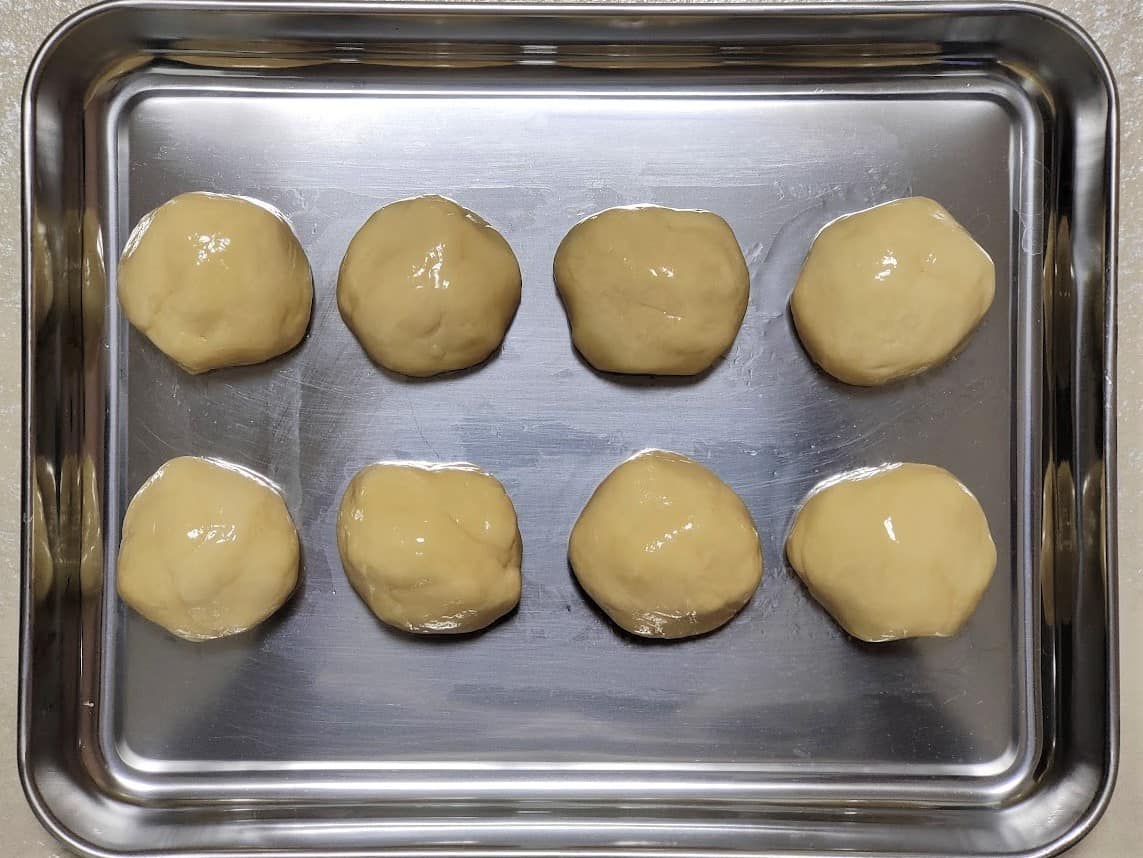
Step 3
Lightly coat your hands with a small amount of oil (not listed in the ingredients) to prevent the dough from sticking to them, and roll the dough into balls, each about 1.2 inches (3 cm) in diameter.
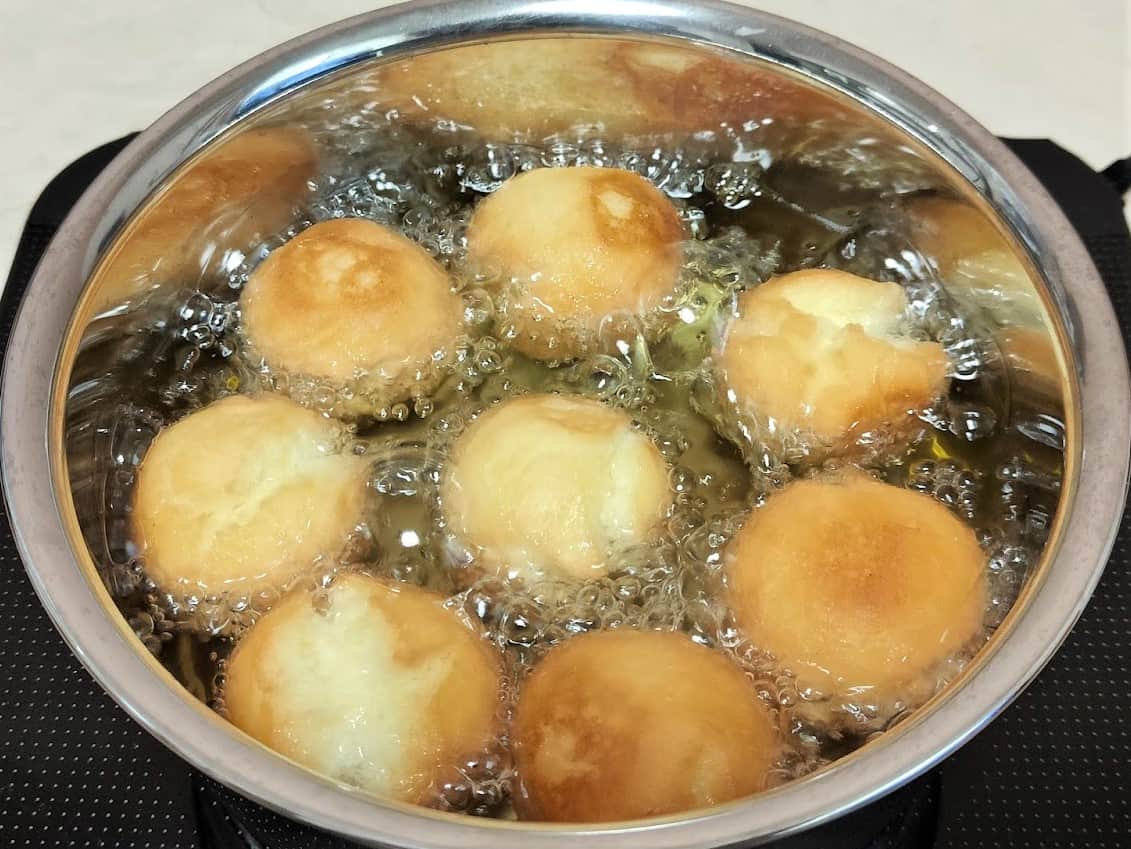
Step 4
Pour oil into a pot and heat it to a temperature of 300-320℉ (150-160℃). Then, place the dough balls into the pot and deep-fry them for about 5-6 minutes until they crack and turn golden brown.

Step 5
Remove them from the pot and drain the excess oil on a wire rack or on paper towels.
To store
You can store it at room temperature for up to 2 weeks.
Tips on how to make
- Baking powder and sugar should be added; otherwise, the dough might burst during deep-frying.
- Deep-fry the dough slowly at 300-320℉ (150-160℃). A higher temperature may cause the outside of the dough to burn while leaving the inside uncooked.
If you try this recipe, I’d love to hear what you think. Please consider leaving a review and star rating in the comments below. If you enjoyed it, I’d really appreciate it if you shared it with your friends.
Recipe card
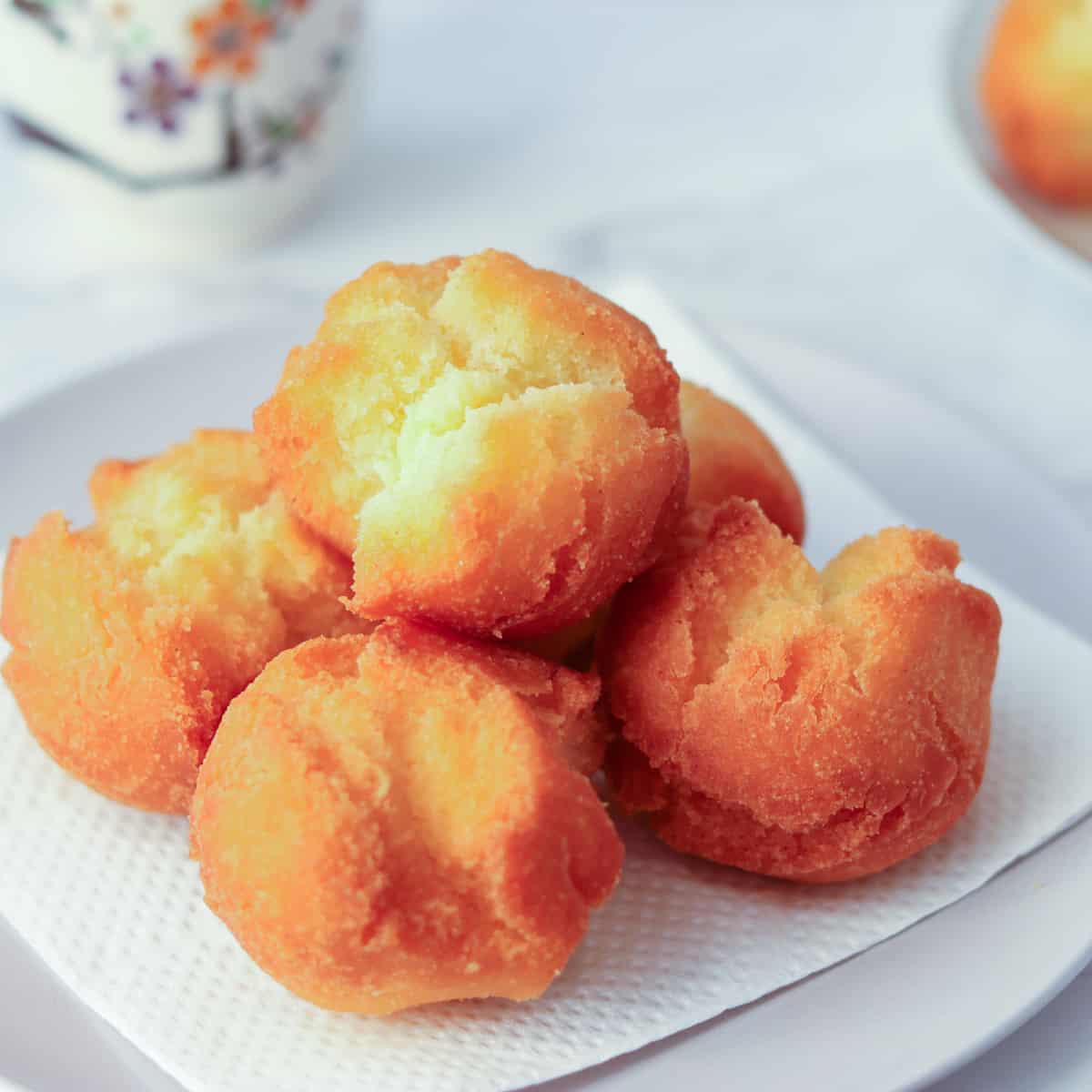
Sata Andagi (Okinawan Doughnuts)
Ingredients
- 1 large egg (about 2.1 oz/60 g, including shell)
- ⅓ cup white sugar
- 1 tsp neutral oil
- 1 ¼ cup cake flour
- 1 tsp baking powder
- 1.2 inches (3cm) of neutral oil in the pan (for deep-frying)
Instructions
- Crack egg into a bowl and beat it with sugar and oil.
- Sift flour and baking powder into the bowl, and mix everything together with a spatula until no powder is visible.
- Lightly coat your hands with a small amount of oil (not listed in the ingredients) to prevent the dough from sticking to them, and roll the dough into balls, each about 1.2 inches (3 cm) in diameter.
- Pour oil into a pot and heat it to a temperature of 300-320℉ (150-160℃). Then, place the dough balls into the pot and deep-fry them for about 5-6 minutes until they crack and turn golden brown.
- Remove them from the pot and drain the excess oil on a wire rack or on paper towels.
Notes
- You can store it at room temperature for up to 2 weeks.

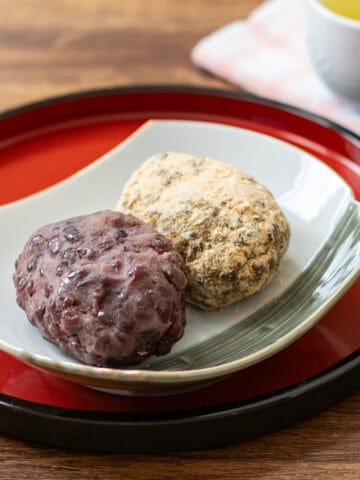


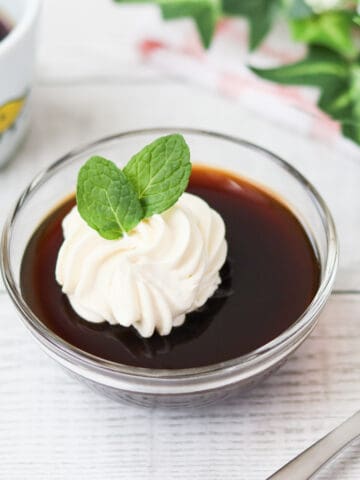
Jack Salvador says
I am from Hawaii. Love this...
Will try more of your recipes.
Aloha from the Big Island of Hawaii....
Ryo Hikita (Umami Pot) says
Thank you so much! I'm so glad you liked it. Hope you have fun trying out more of my recipes—sending Aloha back to the Big Island! 🙂